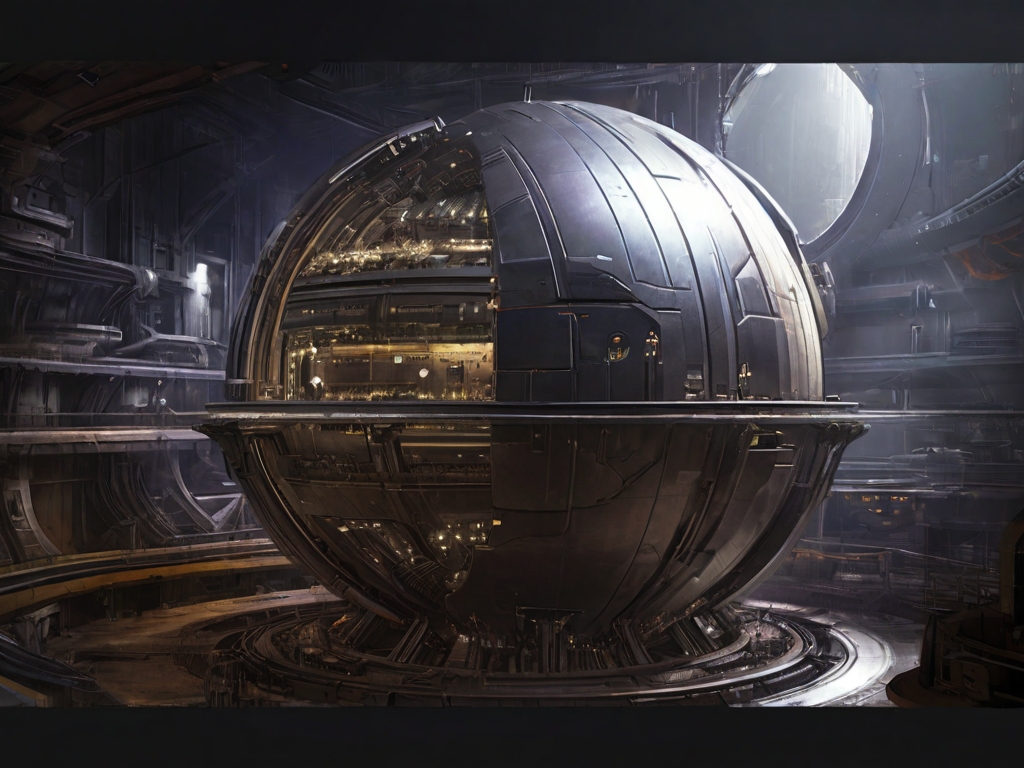
Introduction
The concept of a Dyson sphere, first proposed by physicist Freeman Dyson in 1960, has captured the imagination of scientists and science fiction enthusiasts alike. A Dyson sphere is a hypothetical megastructure that completely encompasses a star, capturing most or all of its energy output for human use. This idea has led to various theoretical designs such as Dyson rings, Dyson shells, and other variations aimed at harnessing the immense energy of a star like our own Sun. In this article, we will delve into the feasibility of constructing a Dyson sphere around the Sun, examining the challenges, potential solutions, and implications of such a monumental endeavor.

Understanding Dyson Spheres
A Dyson sphere is essentially a massive artificial structure that surrounds a star, capturing its energy emissions for various purposes. The concept originated from Dyson’s paper titled “Search for Artificial Stellar Sources of Infrared Radiation,” where he proposed that advanced civilizations might construct such structures to meet their energy needs. While the idea of a solid shell encasing a star is often depicted in popular culture, it is important to note that Dyson himself envisioned a swarm of smaller objects orbiting the star, collectively harnessing its energy.

Types of Dyson Spheres
There are several proposed designs for Dyson spheres, each with its own advantages and challenges. The most well-known concept is the “Dyson shell,” which consists of a solid shell or series of concentric shells surrounding the star at various distances. Another variation is the “Dyson ring,” which is a ring-shaped structure orbiting the star. Additionally, there are ideas such as Dyson swarms, which involve a vast number of individual objects orbiting the star in a coordinated manner. Each of these designs presents unique engineering and logistical considerations.

Feasibility Considerations
Constructing a Dyson sphere around the Sun presents numerous challenges, both technological and logistical. One of the primary hurdles is the sheer scale of the project. The Sun has a radius of approximately 696,340 kilometers, meaning that any Dyson sphere built around it would need to be orders of magnitude larger. Additionally, the materials required for such a structure would need to be sourced from within the solar system, posing significant mining and transportation challenges.
Furthermore, the construction process itself would be incredibly complex. Building a Dyson sphere would require precise coordination of countless individual components, whether they are solar panels, mirrors, or other energy-capturing devices. Additionally, maintaining stability within the sphere’s structure and ensuring proper distribution of energy would be critical tasks.
Another consideration is the potential impact on the solar system and surrounding environment. The construction of a Dyson sphere would likely involve significant manipulation of celestial bodies and resources, which could have unintended consequences for planetary orbits, asteroid belts, and other features of the solar system. Additionally, the immense energy output of the Sun could pose risks if not properly managed and controlled.

Possible Solutions and Technologies
Despite the daunting challenges, there are potential solutions and technologies that could aid in the construction of a Dyson sphere around the Sun. Advances in materials science, such as the development of stronger and lighter materials, could make it feasible to construct such a massive structure. Additionally, advances in robotics and automation could streamline the construction process, reducing the need for human intervention in space.
Furthermore, innovations in energy storage and transmission could help address the issue of distributing the captured energy efficiently. Technologies such as superconductors and advanced energy conversion systems could allow for the transfer of energy from the Dyson sphere to distant locations within the solar system or even beyond.

Implications and Speculations
The construction of a Dyson sphere around the Sun would have profound implications for humanity and our understanding of the universe. It would represent a monumental achievement in engineering and space exploration, potentially opening up new avenues for energy production and colonization of space. However, it would also raise ethical and philosophical questions about the impact of such megastructures on the natural order of the cosmos and the potential consequences for other life forms that may inhabit the universe.
From a practical standpoint, a Dyson sphere around the Sun could provide virtually unlimited energy for human civilization, enabling us to sustainably meet our growing energy needs without relying on finite resources such as fossil fuels. It could also serve as a stepping stone for further exploration and expansion into the cosmos, as the energy captured from the Sun could power future missions to distant planets and beyond.

Conclusion
In conclusion, while the concept of constructing a Dyson sphere around the Sun is fraught with challenges and uncertainties, it represents a tantalizing possibility for humanity’s future in space. The realization of such a megastructure would require unprecedented technological advancements, international cooperation, and a reimagining of our place in the universe. Whether or not we ultimately achieve this feat remains to be seen, but the pursuit of such ambitious goals pushes the boundaries of human ingenuity and inspires us to reach for the stars.
